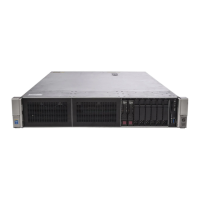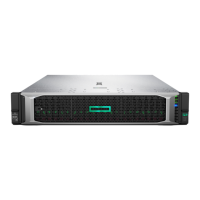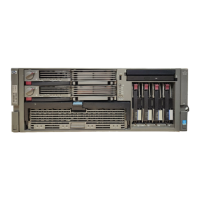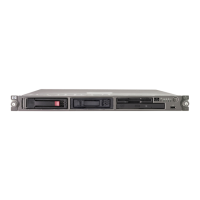Troubleshooting 3-29
Soft Errors
This section provides information on Operating System (OS) soft errors that do not stop system operation.
The following list are the basic steps in troubleshooting the OS failures:
• Determine the environment.
• Check the error logs.
• Run diagnostics.
• Take appropriate action.
You must determine the environment. This means observing the front panel display and any console
messages. You should also check all error logs in the system and peripheral devices, if appropriate.
If needed, there are both offline and online diagnostics, as well as a system exerciser, that you can use to
troubleshoot the error. Once you determine the cause of the error, you can act accordingly.
Performance Problems
Another type of soft error is performance problems. A performance problem is characterized by unusually
slow response to one or more applications or user input. Some applications or user inputs may not get any
response. If the system seems to have a performance problem, use the recovery procedures in Table 3-16.
on page 3-29.
Diagnostic Tools
MPE/iX or HP-UX prior to 10.20 IPR 9707
Online Diagnostics
The online diagnostics require a user license and have password protection against unauthorized use. When
you purchase a support license, you will get a password.
Table 3-16. System Performance Troubleshooting
Symptoms Recovery Procedure
System responds slowly to one or more
programs/users.
See if any active processes are making heavy use of computer
resources. (For example, a massive compilation or a real time
process.)
Other programs/users cannot seem to get a
response.
Try sending an interrupt (Control-C) at a terminal.
System seems slow. 1. Check another terminal to verify that the problem is not just a
console hang.
2. Check the memory configuration for maximum performance,
especially if the memory has been recently upgraded.
3. Check CPU configuration with the
PR command in the Infor-
mation menu.
4. Check for excessive I-Cache LPMCs in the system (refer to
Diagnostic Tools section).
5. Check IPRefetch configuration with the IPR command from
the Information or Configuration menu.
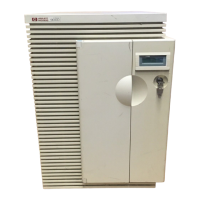
